American Kovalcik keeps steher tradition alive at Berlin Six Day
US omnium champ will also pair with East in Copenhagen
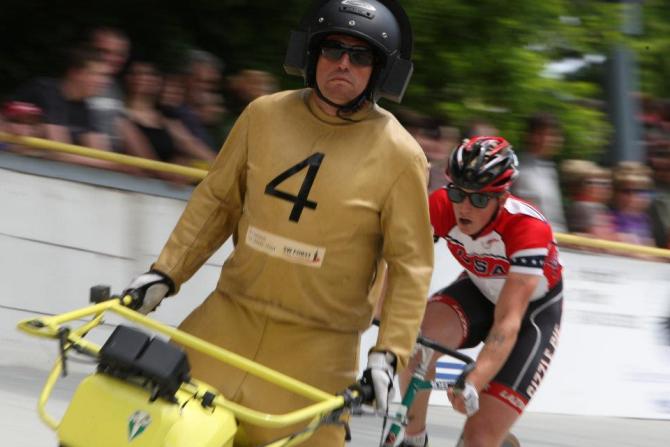
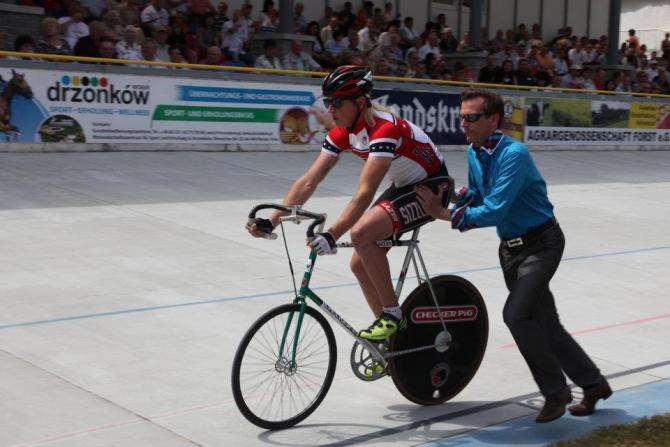
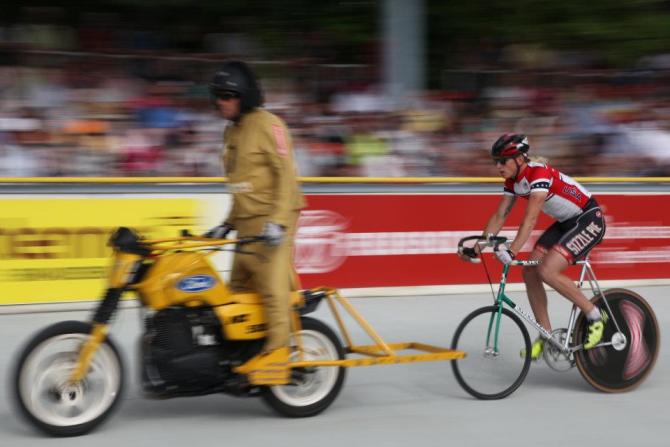
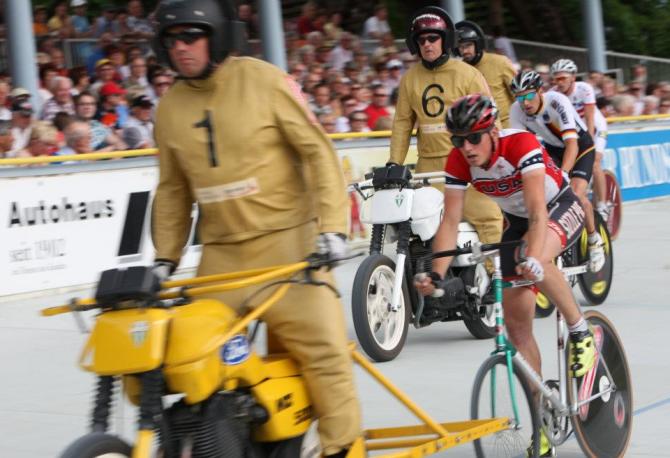
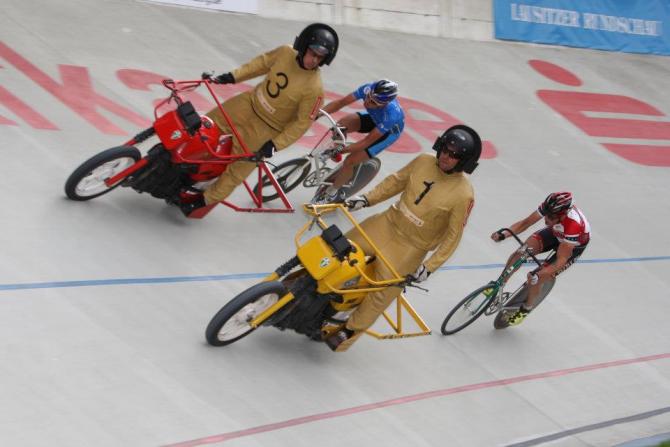
The all-but-forgotten art of steher racing will have a little yankee flavor added this week when reining US omnium champion Zak Kovalcik competes in the high-speed niche event during the 102nd Berlin Six Day January 24-29.
The mass start motor-paced track race puts each cyclist behind a full-sized motorcycle that has been modified with handlebars that sweep back toward the driver, affording the operator a standing position that creates the largest possible draft for the cyclist behind. The back side of the motorcycle also features a roller bar that the rider can bump his front wheel against without going down.
Steher bikes are equally specialized: A 24-inch front wheel on a reversed-rake fork moves the rider toward the front of the sturdy steel frame and closer to the moto's draft. A reinforced stem allows the rider to sit in a more upright position for better vision as he's being paced around the track at speeds from 65-100 km/h.
The fast, loud and chaotic event is a throwback to an earlier time when steher racing was a regular sight on velodromes across Europe and in the United States. But the UCI dropped stehers from the world championships in 1994, leaving German Carsten Podlesch as the last person to earn a rainbow jersey in the event.
Although steher racing has slipped from many track schedules, a dedicated group of enthusiasts led by Podlesch, whose uncle Rainier was also a steher world champion, have kept the event alive. It survives now at a handful of velodromes and six-day races.
“Berlin is probably the biggest stage for steher races left in the six-day world,” said Kovalcik, 30, who is starting his seventh season of track racing. “With the Dortmund Six and a lot of the other sixes going away, the stehers have been left with only two major six days on the circuit, one being Zurich and the other being Berlin. So to be able to do the stehers at Berlin is a real honor. I'm super excited.”
Kovalcik got his first introduction to steher racing last spring after Podlesch put out word that he was looking for an American who might be interested in trying the discipline after no US riders had competed in the event for many decades. Steher racing was a key ingredient of US cycling during the velodrome racing heyday at the turn of the Century, but one has to look back to the mid-1970s to find the last Americans in the sport.
The latest race content, interviews, features, reviews and expert buying guides, direct to your inbox!
Podlesch contacted former US Olympian and coach Jack Simes to gauge American interest, and Simes in turn reached out to Kovalcik.
“He's a colorful character, and I thought there might be an opportunity for him to learn this style of racing, have a good time doing it and earn some money,” Simes said. “It would also begin to get an American involved in steher racing, which we may see come again in the United States as indoor velodromes ultimately redevelop here.”
The steher idea intrigued Kovalcik, a former bike courier from Portland, Oregon, and so he traveled to Germany for two weeks last May to learn the finer points. The American got a few quick sink-or-swim lessons from Podlesch and then was almost literally thrown into some races.
Although riders who compete regularly in steher races have drivers that they work with quite often “like a good Madison team,” Kovalcik said, he had to adjust to three different drivers during his short two-week trip last year. That lack of experience racing together, combined with language barriers, can make communication between driver and rider difficult.
“There are basically two commands between you and your driver,” Kovalcik said. “To go faster you say, 'Allez,' and to go slower you say, 'Oh.' So when I was getting used to it there was a lot more 'oh' than there was 'allez.'”
Kovalcik said it's likely he'll also have a new driver for the Berlin Six Day, which will feature a 20 km steher scratch race each of the six nights. Despite such challenges, Kovalcik is champing at the bit for another chance to compete in the novelty event in one of its premiere venues.
“There are seven stehers on the track at once behind the big white BMWs they have at the Berlin velodrome,” he said. “From what I hear the crowds there just love it.”
After Berlin, Kovalcik's European trip will take him to Denmark, where he'll team up with fellow US rider Guy East for the Copenhagen Six Day, which starts January 31.
Growing up in Missoula, Montana, Pat competed in his first bike race in 1985 at Flathead Lake. He studied English and journalism at the University of Oregon and has covered North American cycling extensively since 2009, as well as racing and teams in Europe and South America. Pat currently lives in the US outside of Portland, Oregon, with his imaginary dog Rusty.